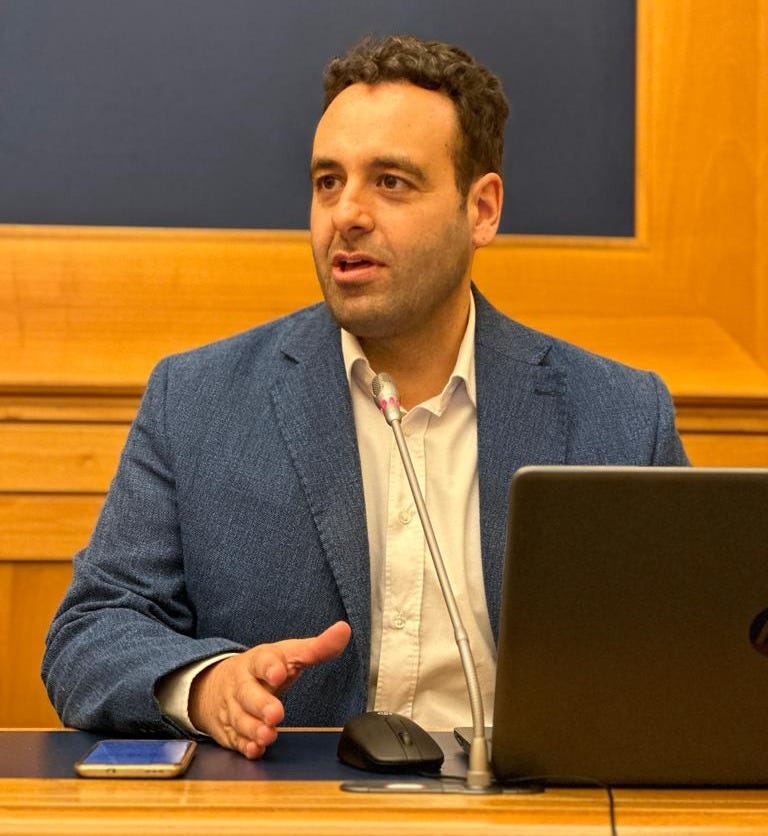Bologna Città 30: How Slowing Down Can Move Us Forward
Interview with Andrea Colombo | Bologna, Italy
In January 2024, Bologna became the first major Italian city to adopt a 30km/h speed limit, after years of strenuous campaigning from local activists and the election of a brilliant mayor. And, for the first time since 1991, not a single pedestrian fatality was recorded in the entire city in the course of a year.
Recently published data shows the success of the initiative:
Fewer accidents: 371 fewer accidents (2,457 in 2024 compared to the 2022-2023 average of 2,828), with 269 fewer injured people (2,159 compared to 2,428), and 191 fewer accidents with injuries (1,758 compared to 1,949)
Increase in sustainable mobility: +10% of bike traffic, drastic increase in people using train services to get to Bologna and to move within the city
Decrease in air pollution: NO₂ (nitrogen dioxide) levels dropped by 29.3% compared to the 2022-2023 average. The recorded hourly average of 29 µg/m³ (as of November 30) is the lowest in the past 10 years.
To reflect on the success of the first year of Bologna Città 30, the Urban Cycling Institute interviewed Andrea Colombo, project manager of the initiative.
Andrea, it is so nice today to sit here with you. First of all, it is clear that to do your job you need a remarkable passion for activism and active mobility. Tell us a bit more about how you became involved in this project.
Let’s just say that I began my “career” as an anti-smog activist, fighting for the reduction of pollution in neighborhoods of the city. My activism and my desire to work with local communities, pushed me to become a municipal councillor and deputy mayor for mobility and transport here in the beautiful city of Bologna. Nowadays, I am busy with managing various aspects of Bologna Città 30, which unites my passions, from working to protect the environment, to engaging with the collectivity and the communities of the city, to granting a real public space: democratic and safe!
How did the idea of Bologna Città 30 start?
The story of Bologna Città 30 is one of constructive collaboration between politics and local communities. Everything started in 2019, when the idea of making Bologna a “30km/h city” appeared in the first urban plan for sustainable mobility. However, it was just an idea, and it seemed very difficult to transform it into reality. Then, in May 2021, a tragic accident happened: a 12 year old girl, Margherita, was run over by a speeding motorist while riding her bike on her way back from school. She ended up in a coma, which led to an uproar, not only in her neighborhood but in the whole city. Residents and activists started campaigning for the lowering of speed limits throughout the city, and the petition was also signed by Matteo Lepore, who became mayor in 2022 and transformed what was then only an idea, into a tangible reality. Only thanks to the continuous stimulus between politics and communities, Bologna Città 30 was made possible. Everyone collaborated, in a circle of inspiration and mutual support, not in opposition but in constructive collaboration towards a common goal.
And can I ask you, over the years, how has Bologna changed from a traffic point of view? How do you perceive it as a citizen?
What has been the best thing to witness is definitely the increase in active mobility. With a lower danger from cars, more and more people have started using the bike regularly; and we have seen a great increase in biking, especially with our bike sharing system that registered more than a million more rides than the average of 2022 and 2023. And you know, historically in Bologna there has always been a strong use of bicycles; so it is quite nice to see the city get back on its track.
How does it feel to be part of this project, how was it to realize it?
Working for Bologna Città 30 was very demanding but equally exciting; drawing a policy from scratch was a big challenge, and seeing it turned into a real project in just two years was priceless. For me, it was essential to include a set of accompanying measures, without simply limiting the effort to the reduction of speed. This is why we included physical transformation of the urban space and plans to increase public transportation, to give more freedom and peace of mind to cyclists and pedestrians; and this is also why we focused strongly on communication, education, cultural dissemination and citizens and stakeholders engagement.
This is really interesting, and I would love for you to expand on it. I remember that when Bologna Città 30 started, public opinion was not super favorable. However, it seems that now the tables have turned, how did this happen?
The common feeling towards Bologna Città 30 has improved for two reasons. The first one is perceptive, and the second is scientific. Before the measures came into force, we really focused on public communication campaigns to show citizens the expected advantages of the initiative. Once Bologna Città 30 started, people could concretely feel the difference compared to a “50 km/h city”, they could see that crossing the road as a pedestrian was easier, and that riding the bike in a more silent environment was more pleasant. Most importantly, car drivers understood that the speed limit was not increasing their commute time, which actually remained the same. Public opinion has really shifted compared to January 2024, and people are more positive towards it; it is a big lesson: no matter how much you invest in communication, to prove the benefits of a project, people have to experience them, otherwise societal acceptance won’t come. From the scientific perspective, it has been very helpful, also for the purpose of transparency towards the community, to be able to collect, analyze and periodically count data. In this way, we could frequently show the effectiveness and impact of the project, indirectly responding to all those objections, concerns and false myths on the 30 km/h speed limit. Many people complained that the measure was useless, because most accidents were supposedly caused by people driving under influence, or using the phone; but actually once people started seeing that reducing speed, also reduced accidents, they understood there is much more to traffic safety than they imagined. Another classic objection was that it would have increased traffic, travel time and pollution, and well, data clearly shows that traffic has dropped by more than 5% in the city, and so did nitrogen dioxide levels by more than 30%, while the average travel time has increased by less than a minute. For me this is a great success, and it is absolutely normal for citizens to be skeptical at the beginning, it is a new measure that implies quite a few changes in the city; and I am happy to see them accepting it more and more!
Has cycling been impacted by the 30km/h speed limit?
You know, a classic objection that we would get during the implementation phase was “you are doing this to encourage active mobility, but we need more infrastructure before seeing real results!”. And here too, data can help us see the reality of these improvements. Of course, we are working to make the infrastructure grow, for pedestrians and cyclists alike. However, since the new measure started, we have seen an increase in cycling and public transport use! This is a consequence of the calmer and safer roads, and of the good communication campaigns on the promotion of active mobility! In the end, this makes life easier for all, including those who need to use the car. In the past few years, cycling in Bologna has increased a lot; if 10 years ago you would mostly see students cycling around, now you see a diverse crowd! Today in Bologna, we don’t have (yet) the quantitative and qualitative levels of cycling we see in other european cities, but still many people rely on active mobility for their daily transport and this measure made it easier for all. Perhaps this is bringing back the lost tradition of cycling in Bologna!
Which cities inspire Bologna’s future?
Many cities inspire us, but I must say Valencia above all, as they have had such an increase of green in past years, accompanied by reductions of speed limits and increase in pedestrian areas. There is of course also Paris, looking at their rapid transformation of public spaces is inspiring for everyone. And we cannot forget Amsterdam, in terms of cyclability, a city where traffic does not solely rely on the strict separation of all modes, but where there is a constant process of coexistence.
Last question, what is the goal of Bologna Città 30?
The first goal is above all road safety. But the second one, is to inspire the rest of the country to start a more democratic and equal redistribution of public space. The responsibility of redrawing urban space and rebalancing the ratio of cars and people is a great one, and it works best when done in service to all citizens.
With the recent negative developments in the Italian traffic code, the case of Bologna offers a breath of fresh air, and reminds us that slowing down is often the best way to move forward.
Written by , Researcher at Urban Cycling Institute.
Interested in writing or sponsoring an article? Send us a pitch at media@urbancyclinginstitute.org
Learn more on our website:
Take a course in Italian:









Insightful article Michela, and inspiring!
"no matter how much you invest in communication, to prove the benefits of a project, people have to experience them, otherwise societal acceptance won’t come" -> Sometimes bold political actions are necessary despite initial public resentment. Experience is the most essential convincing tool. Benefits become tangible, which eventually (hopefully) helps building long-term public support. This was a great example.
Another example of a great Cycling Mayor. Sforza!